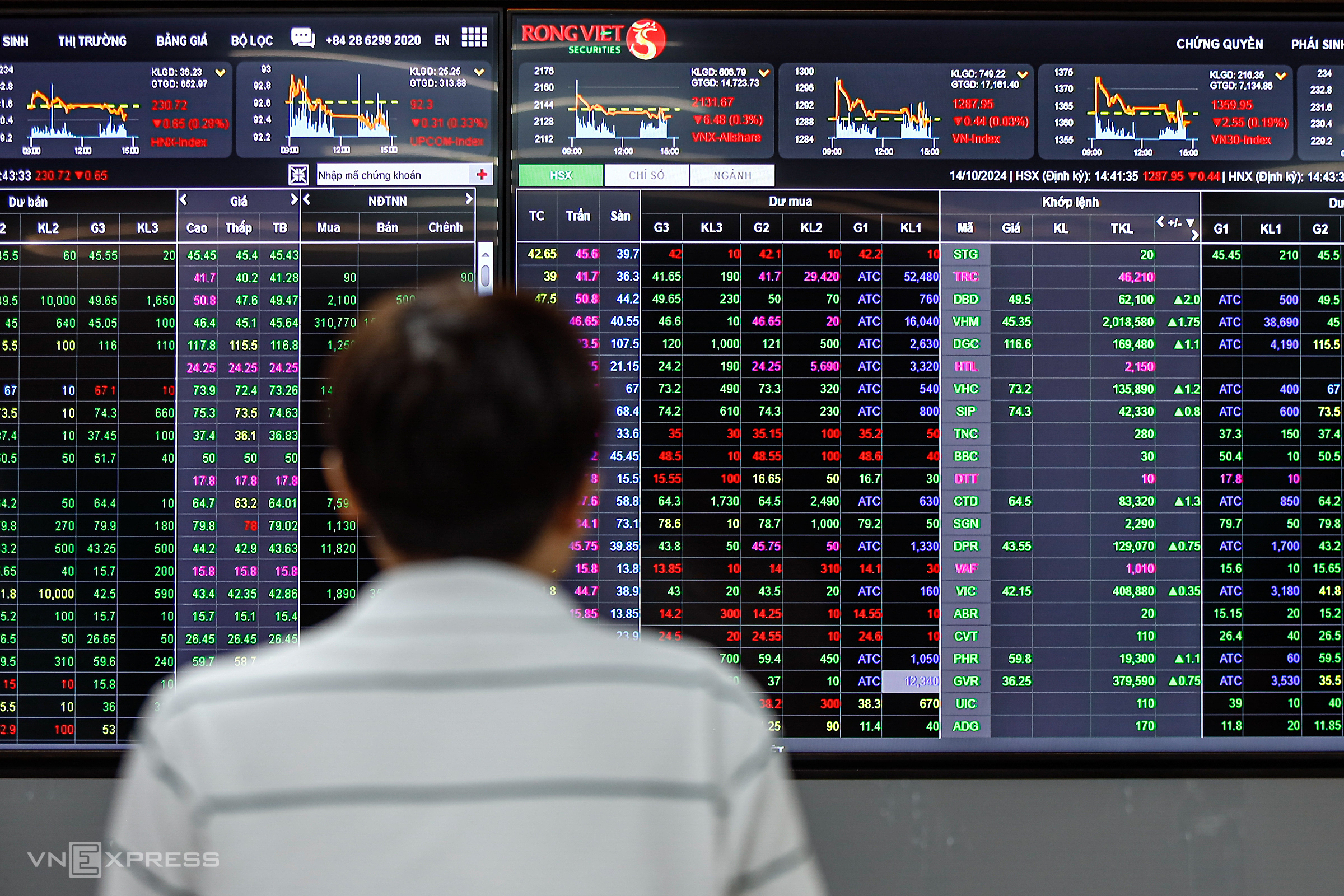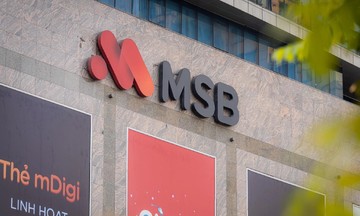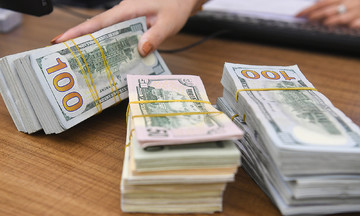The stock market has seen over six consecutive green sessions, accumulating nearly 76 points. Closing on 11/7, the VN-Index reached nearly 1,458 points. This is about 70 points shy of the historical peak of 1,528 points set in early 1/2022.
In previous sessions with double-digit gains, the market mostly closed with green candles and higher-than-average trading volume, indicating strong buying pressure. While some profit-taking was observed, it was localized and didn't establish a dominant trend.
Le Duc Anh, an analyst at investment advisory and brokerage firm FinSuccess, attributes this phenomenon to a genuine boom in the Vietnamese stock market since the tariff-related "crash" in April.
However, he points out that VinGroup stocks (VIC, VHM, VRE, and VPL) have contributed nearly 100 points to the VN-Index since the beginning of the year, with additional support from the Gelex ecosystem (GEE, VSC, EIB, VGC...). The current market price-to-earnings ratio (P/E) is only slightly above the 5-year median of 14, which isn't excessively high. Excluding VinGroup and Gelex stocks, the current valuation remains reasonable.
He cites bank stocks as an example. Aside from a few strong performers driven by specific factors, like STB (up 28%) and TCB (up 43%), others like ACB, VIB, and VPB have remained relatively flat since the beginning of the year. Sectors affected by tariffs, such as exports (textiles, seafood), industrial real estate, and seaports, have even seen negative returns. According to Anh, this explains the limited profit-taking.
Despite headwinds like exchange rates and government bond yields, macroeconomic factors show positive signs, particularly the continued easing of interest rates by central banks globally, including in the US, EU, and UK. Anh believes this positively impacts risk assets like stocks. Recently, market liquidity has remained above one billion USD, sometimes exceeding 33,000 billion VND per session, with a tendency to remain strong.
As of 11/7, AIS Securities suggests that the market has started to differentiate due to short-term profit-taking and investor caution following six consecutive rising sessions. The relative strength index (RSI) has reached high values in the overbought zone, indicating potential for market fluctuations and minor corrections in upcoming sessions.
AIS recommends that investors take profits on stocks that have seen significant gains and reached their target prices. They also advise against chasing stocks that have already risen sharply to manage risk.
Sai Gon - Ha Noi Securities (SHS) notes that with prices nearing their historical peak and after a strong rally in the VN30, investors should monitor selling pressure at high prices and consider taking partial profits.
 |
Investors watch the stock ticker at a securities company in Ho Chi Minh City. Photo: An Khuong |
Investors watch the stock ticker at a securities company in Ho Chi Minh City. Photo: An Khuong
Dinh Kien Vuong, a research and analysis specialist at Thanh Cong Asset Management (TCAM), observes that from yesterday to 11/7, market gains were primarily driven by blue-chip stocks, while mid-cap and small-cap stocks declined. This signals that individual investors are looking to take profits, especially with the surge in VinGroup stocks, often seen as an indicator of market makers boosting the general index, potentially leading to volatility.
"Individual investors are still holding stocks but are apprehensive, and even slight market fluctuations could trigger immediate action," Vuong said, referring to the over 10-point correction mid-morning on 11/7.
Vuong notes that many investors have become accustomed to the VN-Index declining after reaching 1,300 points, a pattern seen throughout 2023-2024. However, he advises against selling based solely on the index in the current context. TCAM's analysis team predicts the upward trend will continue throughout Quarter III, supported by macroeconomic conditions and fiscal policy. In addition, smart money (foreign and institutional investors) is net buying, creating positive momentum.
"Selling too early could leave investors hesitant to re-enter the market as prices continue to rise, even leading to 'buying the top' and difficulty exiting positions if they FOMO back in at higher prices," Vuong explained.
From a technical analysis perspective, Vuong advises investors to raise their profit targets in line with the market. For example, if the VN-Index is at 1,450, the profit target could be 1,430. Observing declines in bank stocks, the recent market leaders, can also signal a time to take profits.
From a fundamental analysis perspective, investors should monitor exchange rates and interest rates. Vuong suggests activating profit-taking plans if the exchange rate shows signs of increasing or interest rates rise.
Le Duc Anh emphasizes that profit-taking depends heavily on individual investment strategies. FinSuccess primarily relies on fundamental analysis and gradually takes profits as stocks reach their target valuations. He suggests a simple approach for current investors: taking profits in small batches, corresponding to different target prices.
"This method both secures realized profits and allows for capturing further gains if the stock has more upside potential," he added.
Tat Dat












